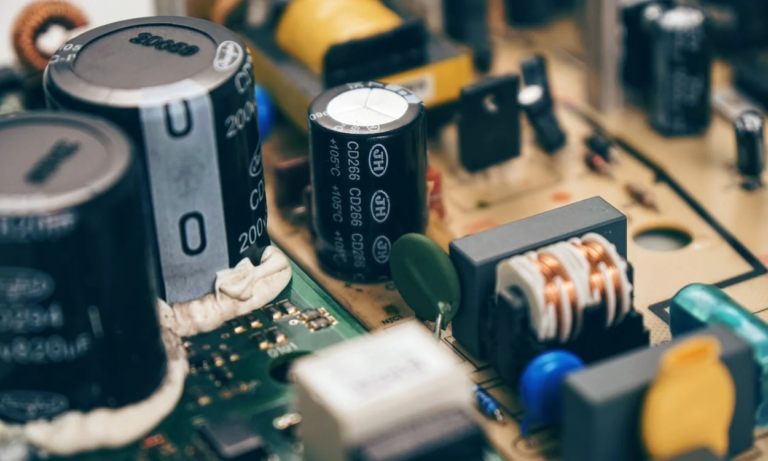Dipole and Quadrupole
In electromagnetism, the concepts of dipoles and quadrupoles play a pivotal role in shaping our understanding of electric and magnetic fields. Though similar in some respects, these fundamental systems exhibit distinct behaviors and characteristics that influence a wide range of physical phenomena.
Whether you’re studying electric charges, magnetic fields, or even sound waves, the properties of dipoles and quadrupoles help explain how forces and fields interact in various environments. In this article, we will explore the differences between dipoles and quadrupoles, delve into their unique properties, and examine their significance across diverse scientific fields.
Understanding Dipole and Quadrupole Fields
Okay, before we get into the nitty-gritty, let’s quickly go over these dipole and quadrupole fields. Don’t worry; it’s not rocket science!

What are Dipole Fields?
An electric dipole is a charge arrangement containing two equal-magnitude, opposite-sign point charges with an electric charge value of q and –q, separated by a distance r (in m). P is the magnitude of the electric dipole moment (in C·m). |q| is the absolute electric charge value of either one of the two-point charges (in C). The direction of p is from the negative to the positive point charge.

In other words, a dipole is a magnetic field with a north and a south pole. But in the science world, they play a much bigger role. You can find dipole fields not just in natural stuff like the Earth’s magnetic field but also in artificial things like the magnets we use in electric motors and generators.

What is an electric dipole moment?
The electric dipole moment quantifies the separation of electric charges within a system. Its SI unit of measurement is the Coulomb meter (C⋅m). In atomic physics and chemistry, the dipole moment is often expressed in Debye units, where 1 Debye is equivalent to 3.34×10−30 C⋅m.
It is calculated by multiplying the distance between the charges by the magnitude of the charge. The dipole moment is always a non-negative value. It quantifies the strength and direction of the dipole, with a larger value indicating a stronger dipole. The dipole moment plays a crucial role in various electrical and molecular interactions. When an electric dipole is placed in a uniform external electric field E, it experiences a net torque of τ = r × F= r × |q|E= |q|r× E= p × E . Thus vector Equation is

the magnitude of the torque equation is

where ϕ (phi) is the angle between the directions of the two vectors p and E; 180˚ ≥ϕ ≥ 0. τ (tau) is the torque (in N·m). τ is a vector perpendicular to both p and E in a right-hand sense.
What are Quadrupole Fields?
Quadrupole fields, on the other hand, are a bit more complex. They have two north poles and two south poles, creating a kind of four-pole setup. You might not come across them as often as dipoles, but they’re essential in various scientific gadgets and experiments.
A true “quadrupole field” is generated when four infinitely long electrodes with the correct hyperbolic cross sections are positioned at the corners of a square, as shown in the figure below.

The quadratic nature of the potential means that the force on a point charge in the electric field changes linearly with the distance from the center of the quadrupole. As a result, it is the potential that is quadrupolar, not the field itself. However, the term “quadrupolar fields” is often used, despite being a misnomer.
How does an electric field affect a dipole?
An electric field exerts a force on a dipole, causing it to align with the field. The positive end of the dipole is attracted towards the negative charge of the electric field, while the negative end is repelled by it. This alignment results in the dipole experiencing a torque and orienting itself along the field direction.
Applications of Dipole and Quadrupole Fields
The dipole magnetic field has numerous applications across various branches of physics and is fundamental to many examples of cosmic magnetic fields, including the Earth’s magnetic field and the magnetic fields of neutron stars.
Quadrupole fields on the other hand play an important role in mass spectroscopy and in ion traps. The quadrupole magnetic field is also commonly used for focusing high-energy charged particle beams. Some other applications of this technology include:
Medical Applications
Do you know those cool MRI machines that doctors use to peek inside your body without cutting you open? Well, dipole and quadrupole fields are the secret sauce behind them! They create a uniform magnetic field, allowing the MRI machine to take detailed images of your insides.

And wait, there’s more! These fields are also helping in magnetic drug targeting. Picture this: doctors can guide medicines using these fields directly to the affected areas in your body, making treatments more effective and reducing side effects. It’s like playing darts with drugs but on a microscopic level!
Environmental Applications
Now, let’s talk about how dipole and quadrupole fields are doing their part for the environment. In ion trap mass spectrometry, these fields play a critical role in analyzing environmental samples. They help scientists identify pollutants and their concentrations in air, water, and soil. That means we can better understand and combat environmental issues. Also, some sensors use these fields to detect pollutants in the air and water.

Industrial Applications
Who said science can’t be cool and industrial? Dipole and quadrupole fields are rocking it here too. Particle accelerators are a prime example. These fields accelerate charged particles to incredible speeds, which find use in industries for all sorts of purposes. From materials processing to medical treatments, particle accelerators are a big deal!
Oh, and have you heard of ion implantation? It’s not what you think! It’s all about using quadrupole fields to precisely shoot ions into materials. The result? Enhanced material properties, making things like computer chips even better!
Future Prospects and Challenges
The future of dipole and quadrupole fields is looking pretty rad. For starters, researchers are working hard to make devices smaller and portable. Imagine having a pocket-sized MRI machine! That could revolutionize personalized medicine and healthcare.
But the excitement doesn’t stop there. Combining these fields with other technologies like AI and nanotech could lead to some serious breakthroughs. It’s like peanut butter and jelly—two good things becoming even better together!
Of course, we can’t ignore the challenges. Energy efficiency is a big one. Generating these fields can be quite power-hungry. But scientists are on it, looking for greener and more sustainable ways to get the job done.
And, of course, safety is paramount. As we use these fields in more applications, we need to ensure they don’t cause harm to us or the environment. Regulations and guidelines will play a crucial role here.
Conclusion
So, there you have it, folks! Dipole and quadrupole fields might have been hiding in the shadows for a while, but now you know how incredibly useful they are in science and technology. From revolutionizing medical imaging to making our industries more efficient, they’re the unsung heroes of innovation.





